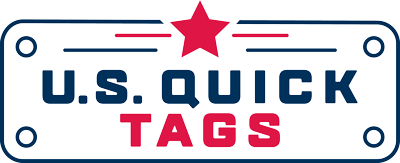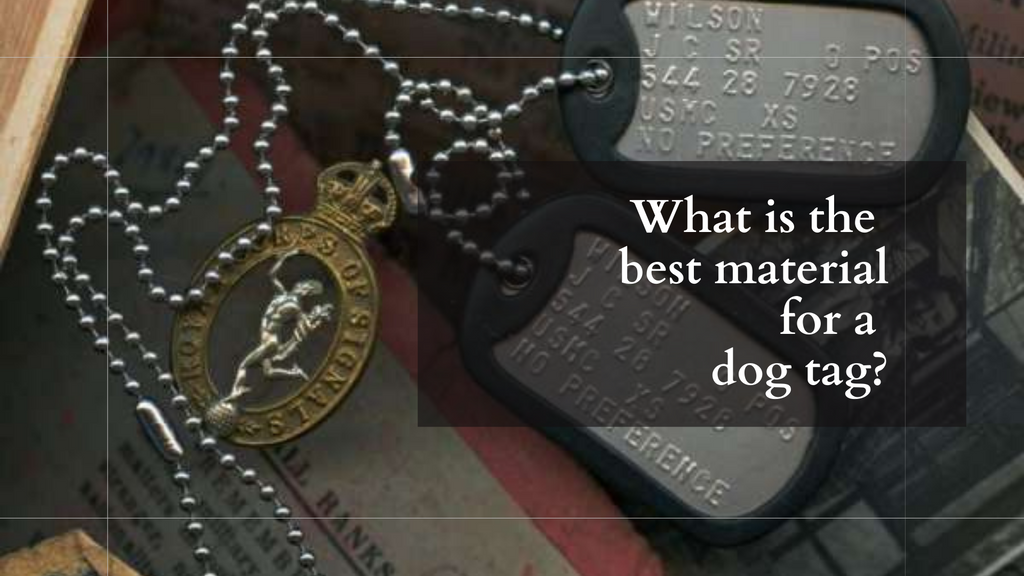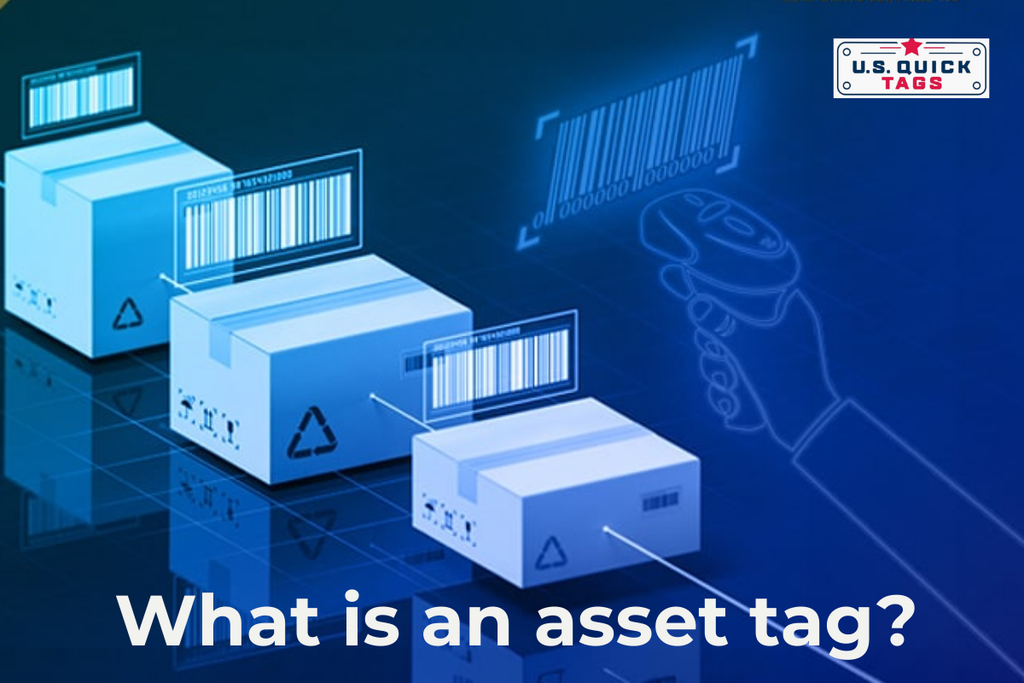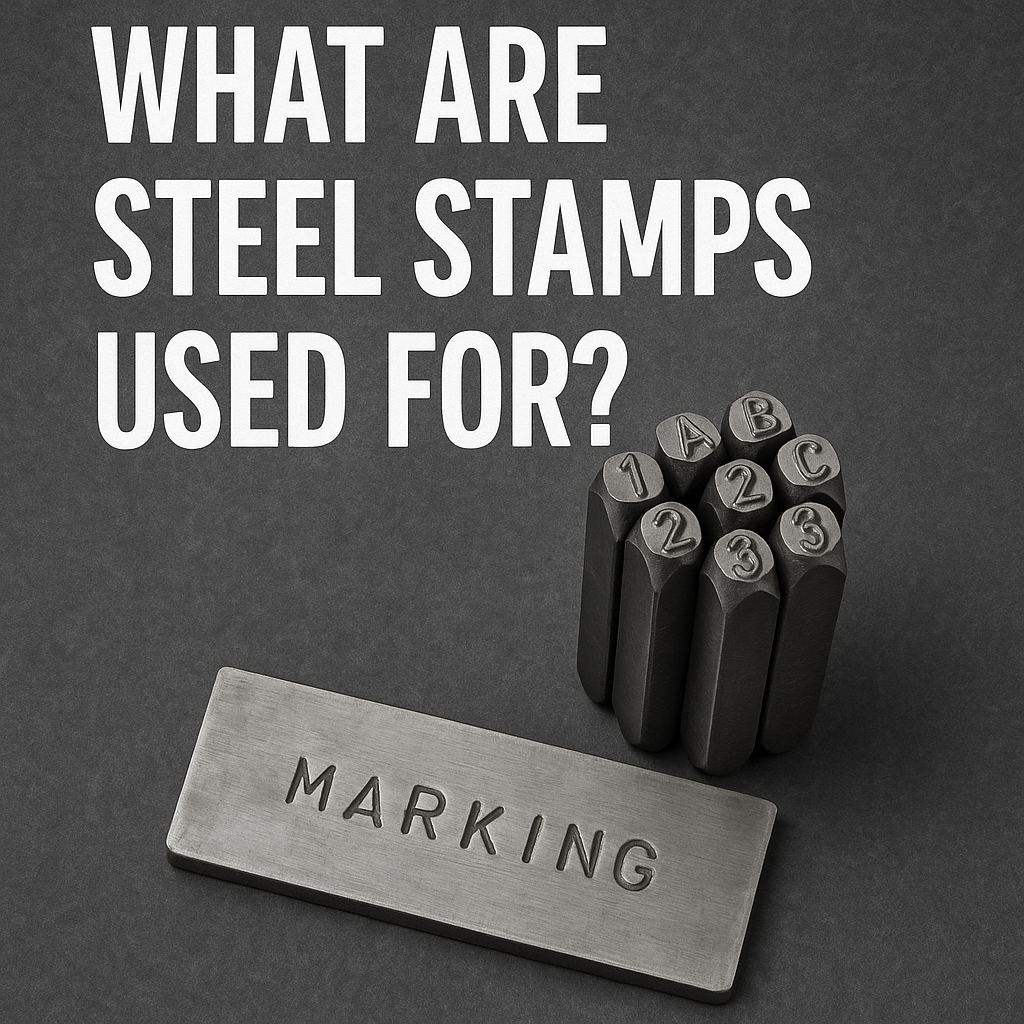What is the Best Material for Dog Tags?
- USQuickBlogs
- 28 Jul, 2023
Dog tags are not just a simple piece of metal but a symbol of identity, loyalty, and service. Commonly associated with military personnel, these small, engraved tags play a crucial role in ensuring the safety and well-being of those in uniform. However, their significance extends beyond the armed forces, as they have found utility in various domains, including emergency medical services, pet identification, and personal identification for travelers. We will explore dog tags' history, purpose, and evolution, delving into their diverse applications and profound impact on countless lives worldwide.
Types of Materials for Engraved Dog Tags
Engraved military dog tags are essential identification tools for service members, and the materials used must meet stringent requirements to withstand harsh conditions. Stainless steel remains the standard choice, valued for its toughness, rust resistance, and ability to endure extreme environments.
Anodized aluminum tags are lighter and come in various colors, allowing for easier identification and personalization. For specialized operations, lightweight yet durable titanium tags are favored. In certain cases, ceramic dog tags are used for their non-conductive properties, suitable for aviators and electronic warfare specialists. Each material serves a crucial purpose in safeguarding military personnel and is vital to their safety and security during their service.

Stainless Steel Dog Tags
Stainless steel dog tags have become synonymous with durability, reliability, and practicality. Renowned for their exceptional strength and resistance to corrosion, these tags are a popular choice for both pets and military personnel.
The non-reactive nature of stainless steel ensures that it won't tarnish or rust, making it ideal for long-term use in various environments. Their robustness allows them to withstand harsh conditions, ensuring that crucial identification information remains intact.
Stainless steel tags offer a sleek and timeless appearance, often paired with precise laser engraving for clear and legible markings. As a symbol of identity and safety, stainless steel dog tags continue to be a trusted and enduring choice for countless individuals worldwide.
Aluminum Dog Tags
Aluminum dog tags are celebrated for their lightweight versatility and vibrant customization options. Popular among pet owners and fashion-forward individuals, aluminum tags come in an array of colors, allowing for personalized flair.
Their lightness ensures comfort for pets, minimizing any discomfort during wear. Despite their lighter weight, aluminum tags still offer durability and resistance to rust, making them suitable for everyday use.
High-quality laser engraving techniques are often employed to achieve sharp and long-lasting markings on the aluminum surface. With their affordability and eye-catching appeal, aluminum dog tags have carved their niche as a trendy and practical choice for those seeking a touch of style along with reliable identification.
Brass Dog Tags
Brass dog tags exude timeless elegance and charm, offering a classic alternative to their stainless steel counterparts. Prized for their natural luster and ability to develop a beautiful patina over time, brass tags possess a unique and distinctive appearance.
Their corrosion-resistant properties ensure durability, making them suitable for both pets and military personnel. Brass tags are often crafted with precision laser engraving, ensuring clear and legible markings that stand the test of time.
While they may require occasional polishing to maintain their shine, the allure of brass dog tags lies in their vintage appeal and enduring style, making them a popular choice for those seeking a touch of sophistication in their identification accessories.
Titanium Dog Tags
Titanium dog tags exemplify the epitome of strength and lightweight performance. Renowned for their exceptional durability and resistance to corrosion, these tags are favored by military personnel and outdoor enthusiasts alike.
Titanium's remarkable strength-to-weight ratio allows for robust tags that feel almost weightless when worn. Their ability to endure extreme conditions, including high temperatures and saltwater exposure, makes them ideal for adventurous pursuits.
Titanium tags often feature precision laser engraving, ensuring clear and permanent identification markings. While titanium dog tags may have a higher initial cost, their unmatched resilience and modern aesthetics make them a sought-after choice for those seeking unparalleled performance and distinctive style in their identification accessories.
Plastic or Polymer Dog Tags
Plastic or polymer dog tags provide a lightweight, budget-friendly alternative to traditional metal tags. While not as robust as stainless steel or aluminum, they still offer adequate durability for everyday use. These tags are often quiet and do not jingle, making them suitable for pets that are noise-sensitive.
Plastic tags come in various colors and can be personalized with ease. Polymer tags offer a convenient solution for temporary identification needs or special occasions, such as events or parties. While they may not withstand extreme conditions, plastic or polymer dog tags remain a practical option for those seeking a cost-effective and versatile identification accessory.

How much information do you want to put on a dog tag?
The amount of information you want to put on a dog tag depends on its intended purpose and your personal preferences. For pet identification, it is essential to include the pet's name and your contact information, such as your phone number or address.
For military personnel, traditional dog tags typically include the individual's last name, first initial, social security number, blood type, and religious preference.
However, with advancements in technology and customization options, you can now include more information, such as medical conditions or allergies, microchip numbers, or additional emergency contacts.
It's crucial to strike a balance between providing essential information for identification and ensuring that the tag remains legible and uncluttered. Always consider the tag's size and the available space for engraving before deciding on the amount of information to include.
Do you prefer a Lightweight tag?
When it comes to dog tags, the preference for a lightweight option is a matter of practicality and comfort. Lightweight tags offer numerous advantages, particularly for pets.
They minimize strain and discomfort, making them ideal for small or delicate breeds. The absence of excess weight reduces jingling sounds, providing peace and quiet during movement.
For active pets, lightweight tags prevent unnecessary distractions or irritation. Similarly, lighter tags contribute to improved agility and ease of wear for military personnel, especially during strenuous operations.
Whether it's for your beloved pet or professional use, opting for a lightweight tag ensures a seamless and comfortable experience without compromising on crucial identification and safety aspects.
Choosing the Right Size and Shape
Selecting the appropriate size and shape for dog tags is crucial to ensure their effectiveness and comfort. The tag should be large enough for pets to accommodate essential information but not overly cumbersome. Small or toy breeds may benefit from smaller, lightweight tags to prevent discomfort. Military personnel often opt for standard rectangular tags that fit securely on uniform collars, offering ample space for crucial identification details. However, unique shapes are also available, such as round or bone-shaped tags for pets, adding a touch of personalization. Balancing functionality and aesthetics, choosing the right size and shape guarantees that the tag fulfills its intended purpose seamlessly and suits the individual's specific needs.

Maintenance and Cleaning of Dog Tags
Proper maintenance and cleaning of dog tags are essential to ensure their longevity and readability. Regular cleaning with mild soap and water can remove dirt, grime, and smudges for stainless steel and aluminum tags.
Avoid using abrasive cleaners that may scratch the surface. For stubborn stains or tarnish on metal tags, a mixture of vinegar and baking soda can be gently applied and rinsed thoroughly. Brass tags develop a natural patina over time, adding character, but can be polished with brass cleaners if desired.
Also, checking the tag's readability periodically and re-engraving if necessary is crucial for accurate identification. By caring for dog tags attentively, you can maintain their appearance and functionality effectively.
Evaluating Durability and Longevity
Several factors come into play when evaluating the durability and longevity of dog tags. The choice of material is paramount, with stainless steel and anodized aluminum being among the most robust options, resistant to rust and wear.
High-quality engraving techniques, such as laser engraving, ensure markings remain clear and permanent over time. The tag's attachment method is vital; sturdy split rings or metal connectors prevent accidental loss.
Assessing the tag's resistance to scratching, bending, and fading is also crucial, as these factors impact its overall longevity. Ultimately, investing in well-crafted, durable tags and conducting periodic checks for signs of wear ensures that they will endure the test of time, serving their purpose effectively.
Eco-Friendly and Sustainable Options
In response to growing environmental consciousness, eco-friendly and sustainable dog tag options have emerged, catering to environmentally conscious pet owners and individuals.
One popular choice is tags made from recycled materials, reducing the demand for new resources. Bamboo and wooden tags offer a renewable and biodegradable alternative, minimizing the impact on the planet.

At the same time, some companies have adopted eco-friendly engraving techniques that consume less energy and reduce waste. Choosing eco-conscious dog tags showcases a commitment to sustainability and supports responsible manufacturing practices.
As the world embraces greener alternatives, these eco-friendly options have become a symbol of conscientiousness and care for both pets and the environment.
Conclusion: The Perfect Dog Tag Material
In summary, the perfect dog tag material largely depends on the specific needs and preferences of the individual. Stainless steel remains a timeless and reliable choice, celebrated for its durability and corrosion resistance, making it a staple for both pets and military personnel. For those seeking lightweight and customizable options, aluminum tags offer a vast array of colors and comfortable wear for pets while still maintaining durability and affordability. Brass dog tags exude a classic and elegant charm, with their natural luster and ability to develop a beautiful patina over time, appealing to those who value vintage aesthetics.
For individuals seeking unparalleled strength and modern aesthetics, titanium dog tags stand out, offering exceptional durability and a feather-light feel, ideal for outdoor enthusiasts and adventurous spirits.

Furthermore, eco-friendly and sustainable options have emerged, demonstrating a commitment to the environment and responsible manufacturing practices. Whether prioritizing functionality, style, or environmental impact, each material offers unique attributes that cater to diverse preferences and purposes.
Ultimately, by carefully evaluating the key factors of durability, customization, aesthetics, and sustainability, the perfect dog tag material can be confidently chosen to ensure reliable and stylish identification for pets and humans.






